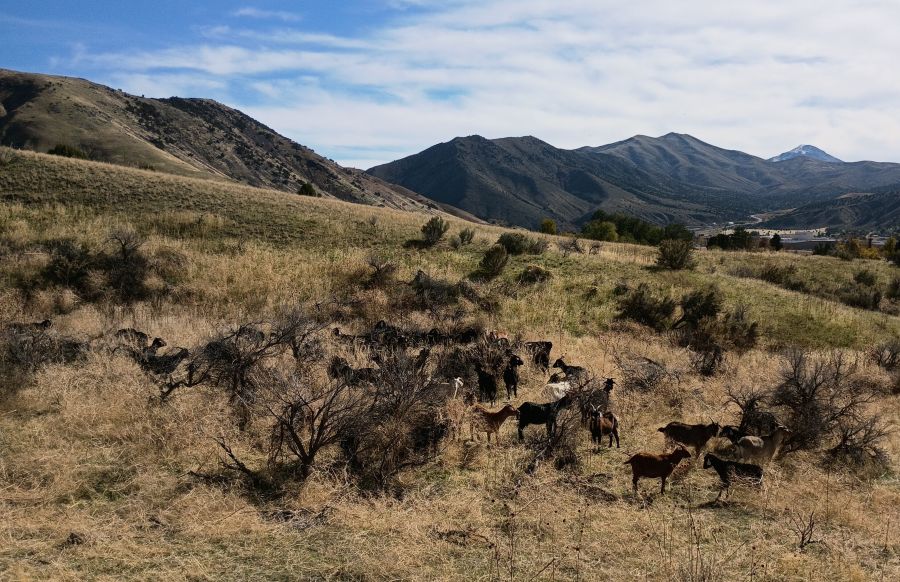Goats put to work as natural weed eaters at Pocatello’s Century Heights Preserve

By Lisa Lete
Click here for updates on this story
POCATELLO (eastidahonews.com) — Seventy goats are earning their keep in Pocatello this week as part of an innovative project using the grazing animals to control weeds and improve wildlife habitat — no chemicals required.
In a collaboration between Idaho Goat Grazers and the Sagebrush Steppe Land Trust, the herd is spending two days at the Century Heights Preserve, munching down invasive species like cheatgrass that threaten native plant communities and increase wildfire risk.
The goats act as “real-life weed whackers,” consuming up the cheatgrass and up to 95% of its seeds — a task that mowing or spraying can’t accomplish as effectively, according to Zakary Copeland of Aberdeen, who owns Idaho Goat Grazers.
“This is a great alternative to mowing and using chemicals to get rid of weeds,” Copeland said. “The goats eat the grass and the seeds instead of spreading them, reducing the number of invasive species in the area.”
The pilot program was tested in the spring and proved so successful that the Sagebrush Steppe Land Trust brought the goats back for a fall follow-up, with plans to make the project a regular, seasonal effort.
“Goat grazing has become a great tool for us,” said Carly Flandro, communications director for the Sagebrush Steppe Land Trust. “It helps us reduce the use of chemicals while improving ecosystem health and fostering native plant growth.”
Flandro said the Century Heights Preserve is protected open space owned and managed by the Land Trust, providing vital habitat for mule deer, coyotes, rabbits, bats, songbirds, snakes, butterflies and bees.
“Sagebrush Steppe stewards the land according to best practices for wildlife and ecosystem health,” Flandro said. “These acts offset carbon and help purify our air and water. The benefits of this open space can’t be overemphasized.”
The goat-grazing project supports the Sagebrush Steppe Land Trust’s broader mission: to protect, connect and enhance wildlife habitat, working lands and community spaces in southeast Idaho — now and for future generations.
Please note: This content carries a strict local market embargo. If you share the same market as the contributor of this article, you may not use it on any platform.